*This post contains affiliate links
I won’t tell you how long these towels have been sitting on my creative table waiting to be hemmed. What is it with final techniques and me? I go to all that trouble to weave something beautiful and then let it sit there for who knows how long before I get around to hemming!
Anyway, lets focus on the positives. The towels ARE hemmed now, and I’m going to share my simple but effective hemming techniques with you!
Firstly, always weave a little extra where you intend to hem, and don’t forget to factor in hemming allowances to your overall calculations. I like to make a little contrast weave at the beginning and end of a piece that I’m going to hem. Here I’ve woven plain weave borders at either end. There are 2 advantage to this –
1. The contrast looks nice.
2. The border is less bulky and therefore makes a more crisp and pleasing hem.
You can see that my raw edge is secured on a serger to prevent any unravelling during the wet finishing process. It is helpful to give the whole woven piece a good press before beginning, it’s always easier to work with pressed fabric.
This is what I call my “dog ear” technique. Fold in a corner on each side of the hem and press down with an iron. There are 2 reasons for this also –
1. The corners can get ugly and a bit ragged in the washing process – I want to hide them!
2. Towels have a tendency to be wider at each end. This reduces a little of that “flared out” look.
Once my dog ears are pressed down neatly, I take the raw edge and fold it over, usually around 1/4″ but more if it’s particularly raggy. Press with the iron.
Now I fold again, this time 1/2″ or more and press. Now all raw edges and corners should be completely encased and hidden. Once pressed, you can also place pins along to hold everything in place if you wish.
Take it to the sewing machine (different towel in this photo but the same process). I use Gutermann sewing thread. I learned early in my sewing journey that life is too short to sew with cheap threads that will break over and over! Sew with a straight, medium stitch close to the folded edge (roughly 1/4 – 1/8″).
You can use a different stitch if you want to, I just like the professional looking finish a medium straight stitch gives. Don’t forget to reverse stitch at the start and finish.
For an almost invisible finish, you can hand hem with a needle and thread, you can find that tutorial here.
Seeing as we’re on the subject of towels, if you’re on the hunt for your next towel project, you may want to try one of my classes or patterns.
Online class:
Diamond Stripe Towel Weave Along (currently only open to members of the Online Weaving School)
PDF Patterns:
Drop me a comment to let me know if this post has been helpful to you, I love feedback!
Until next time…
Happy Weaving!

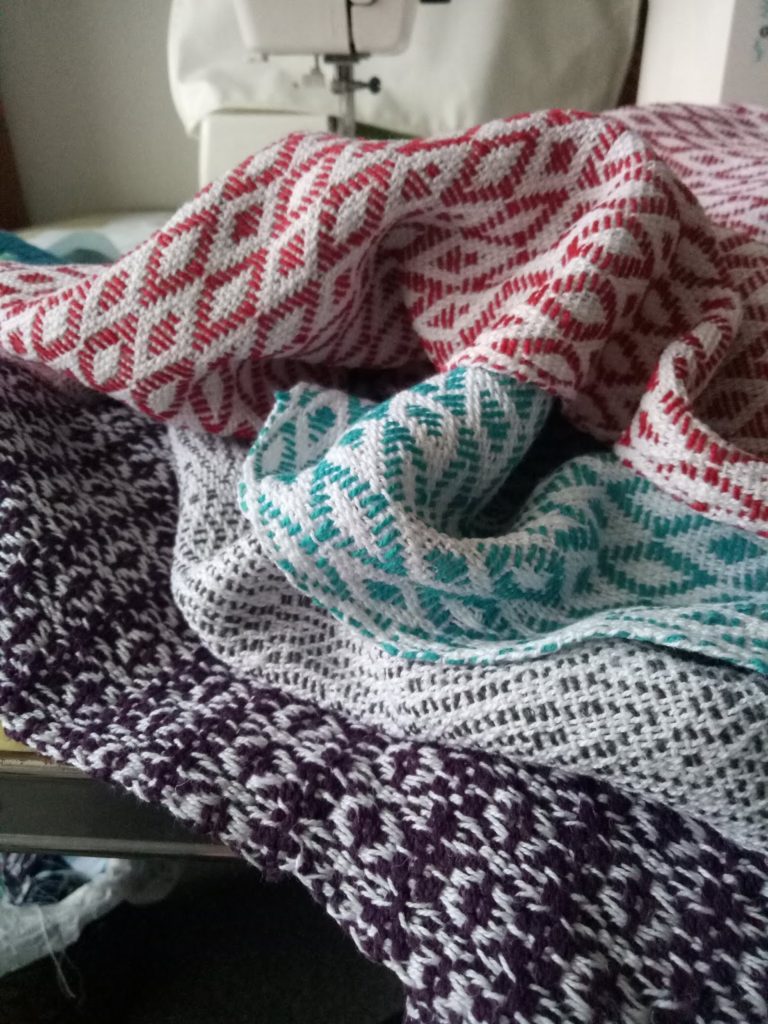
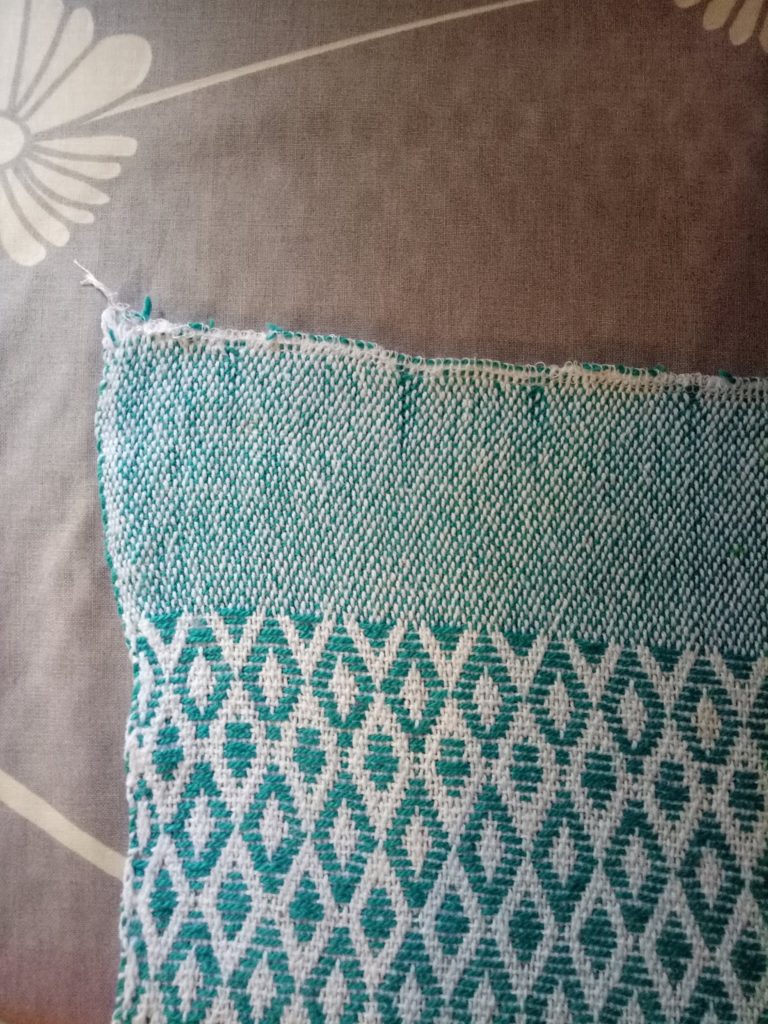

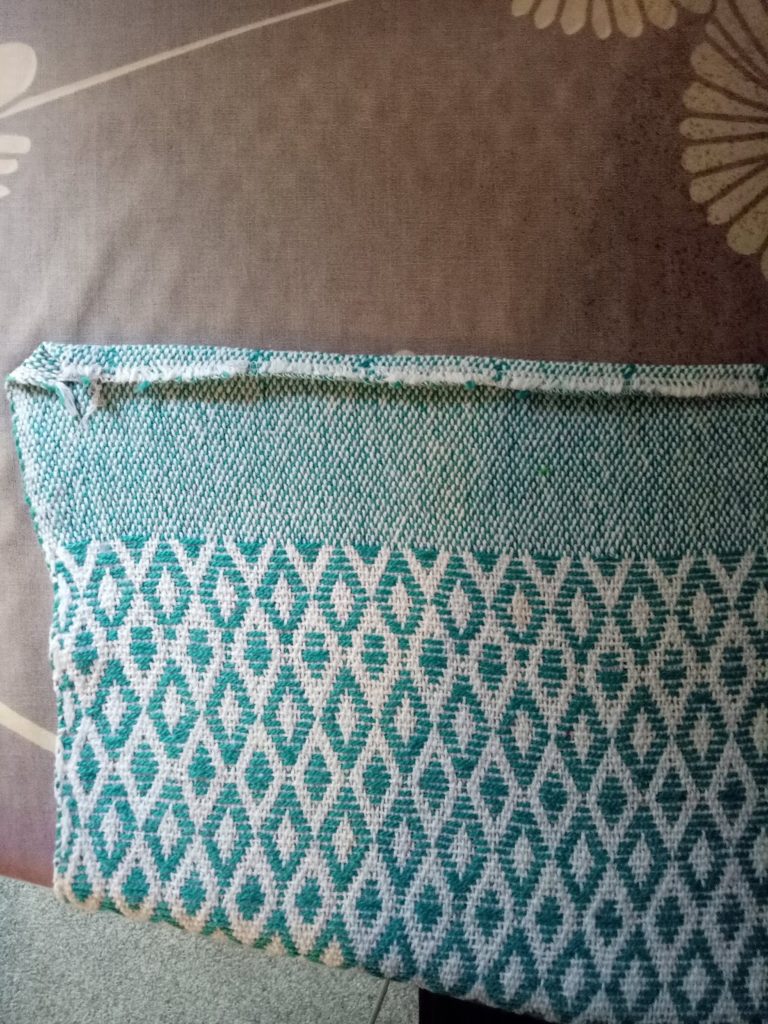
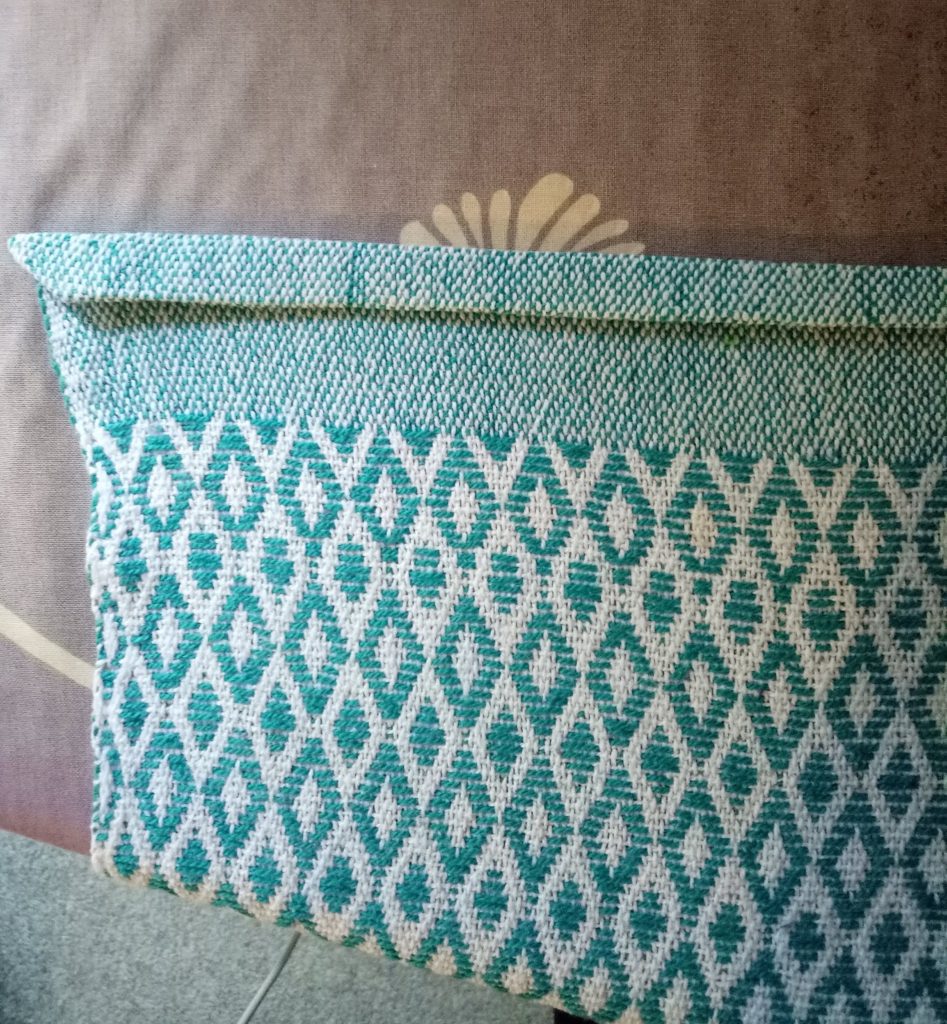

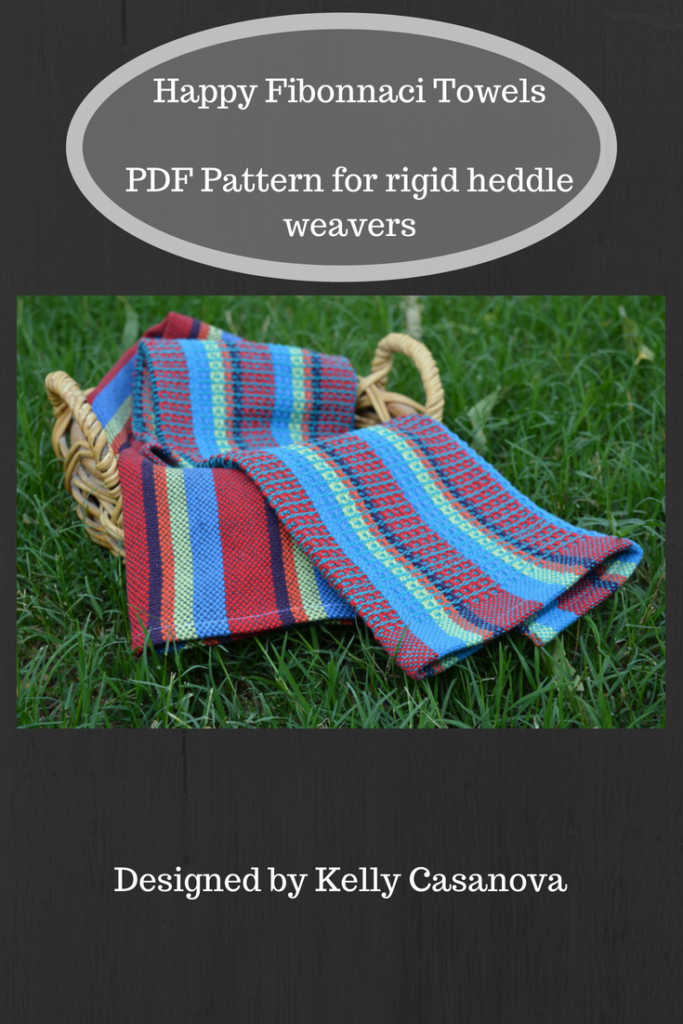
Hi Kelly,
I just put on my first set of towels, after finish your lovely brooks bouquet scarf. This tutorial answered all of my finishing questions (at least for now!)
Thank you for sharing your knowledge!
Debe
That’s great to hear, thank you Debe! 🥰
What size needle do you use for hemming your handwoven towels?
Thank-you,
Suzy
Hi Suzy,
I don’t know the exact size, it’s just a “regular” sewing needle.
How do you finish the edge if you don’t have a serger?
In that case, I would do a tight zigzag stitch on the sewing machine – even a couple of rows.
I am thinking of getting a serger. Which one do you use or recommend? Thank you.
Actually, people ask me that question a lot. I don’t have a particular brand I recommend. I bought mine from a sewing shop who used it as a demonstration model, so I got a cheaper price, it’s an old Toyota model. I think that most of the big name sergers would be good – look at reviews online to see if there are any that don’t perform so well.
I’m so glad I’m not the only one that has a hard time finishing a project after weaving it! You couldn’t have timed this article any better! Thanks Kelly!
I’m happy it’s useful to you Christy 😄
Thank you for the help. So many things I wasn’t sure of and you cleared them up for me.
I’m so glad to hear that Ute, thank you for reading!
I agree with Valerie!! I would so love to see a tutorial or class on hand-hemming…im scared of my sewing machine!!! Lol!!
Elizabeth, a fringe on kitchen towels is not ideal, is it? The fringes will show their age long before the towel does.
Dawn, my rule is always, always wet finish before hemming – you risk distorted hems if you don't.
Thanks so much for sharing this! I’ve been wondering about hemming towels. So far I’ve only done things with hem stitching fringe edges, but I didn’t want that on dish towels.
Thank you so much, Kelly! I recently finished my first towels and noticed the flairing at the ends and that the corner sort of poked out after I had sewn the seam. This will make things much better for future towels.
Do you always wet finish before hemming? I wasn't sure whether I should hem and then wet finish or the other way 'round so I hemmed first.
Sure Valarie, thank you for the feedback.
Wonderful blog and yes it ook me month to finally hem my towels and it took only 30 minutes. Guess I love weaving more than finishing LOL
Excellent tips and visuals! Please do consider doing a post on hand-hemming, I gave all our mother's machines to my sister! (don't have room for sewing machines at my house, anyway). I've held off on making kitchen towels, which I really, really want to do, because of fear of the hemming.
Thank you for reading, Marjan 🙂
Thank you for this great explanation!🌷